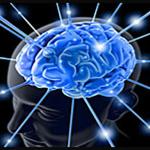05 November 2010

Photos.com
Scientists hope undamaged regions of the brain can take over the role of brain cells killed off in a stroke, allowing patients to regain some lost functions.
Researchers in California are showing some promising results with a new approach to treating stroke. The scientists are focusing on getting undamaged parts of the brain to take over functions impaired by the stroke.
In a stroke, a loss of blood supply — from a clot, for example — can starve brain tissue of oxygen, and brain cells die.
Each part of the brain is hard-wired for certain functions. One part interprets vision, for example; another moves the left hand. But if undamaged regions can take over the role of the brain cells killed off in the stroke, then patients might regain lost functions.
Thomas Carmichael of the University of California Los Angeles explains that the brain can do that itself, in a limited way.
"The tissue around the damaged region can take over some of the function that was lost," he said in a telephone interview.
"For example, if the region that was lost moved the arm, a portion of the brain that, say, normally moves the face — which is adjacent to the arm region — can take over some arm movement."
Carmichael and his colleagues have been trying to figure out how to improve the process.
Using laboratory mice, the scientists induced a stroke in the animals' forelimbs.
"And the rest of the forelimb-movement area [of their brains] is supposed to kick into gear and take over function," Carmichael said. "And what we found is this tissue that was supposed to kick into gear was instead over-inhibited because it had an accumulation of this inhibitory molecule, GABA."
GABA helps regulate the body's muscle tone, but it also inhibits brain cells from taking on any new functions.
So the researchers gave the mice drugs designed to counter the effect of GABA. The result was a significant gain of function in the forelimbs affected by the stroke.
But the scientists found that timing was critical.
"And what we found is, you can give these chemicals beginning, in the mouse, three days after stroke. But if you give them earlier, you actually make the stroke worse."
They got the best results when the treatment was continued for 30 days.
As Carmichael and his colleagues continue their research, one thing they'll be looking at is whether this kind of treatment would work for strokes affecting any part of the brain.
"We know that this therapy works in strokes that occur in the cortex — one part of the brain — as well as in the basal ganglia, a second part of the brain. And so far it looks like this therapy will work with strokes in many different parts of the brain," Carmichael said.
There's a long way to go before this stroke treatment is used to treat human patients. More animal tests are needed; and then, if all goes well, there will be human trials.
The research by Thomas Carmichael and his colleagues was published online by the journal Nature.